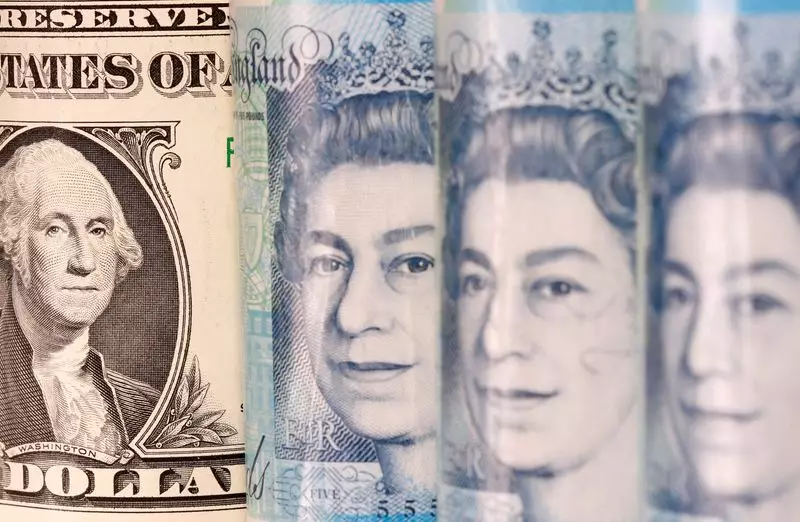The currency markets have recently witnessed significant fluctuations, particularly the British pound, which experienced a notable dip following the unexpected victory of Donald Trump in the U.S. presidential election. This shift has drawn attention to the strong performance of the dollar, which has surged in value, largely due to investor optimism surrounding anticipated economic policies that include trade tariffs and tax reforms. Such developments have instigated a reaction in the market, underscoring the complex interplay between currency valuations and political events.
On a recent trading day, the pound was reported at $1.2627, marking a slight recovery from its previous low of $1.2598, which represented its weakest position since mid-May. The dollar index has gained approximately 3% since Trump’s electoral success, reflecting investor sentiment that pro-growth policies may lead to heightened inflation and a reduced likelihood of interest rate cuts by the Federal Reserve. This expectation has simultaneously driven U.S. Treasury yields higher, further bolstering the dollar’s appeal as an advantageous investment compared to other currencies.
Despite the dollar’s strength, the pound’s current predicament can be attributed to its own economic landscape. The UK economy has recently revealed signs of distress, with a contraction in output reported for September and only a marginal growth of 0.1% over the third quarter. Such data points underscore a troubling narrative for the British economy and have fueled concerns regarding the potential for further monetary easing by the Bank of England (BoE). Market analysts now suggest an 80% probability of a rate cut next month, with forecasts indicating a reduction of around 65 basis points, pushing rates slightly beyond 4% by the end of next year.
The relative stability of the pound in the face of these challenges may seem counterintuitive but can be explained through its performance in comparison to the euro. In a climate where U.S. trade policies are anticipated to impact European markets more severely, the pound has demonstrated resilience, falling only 2.7% since the election—a performance that, while negative, is more favorable than the euro’s trajectory. As investors increasingly redirect their focus towards potential impacts on the European Union, the euro has plunged, reaching a two-and-a-half-year low against the pound at 82.62 pence.
As traders and investors navigate these turbulent waters, the outlook for the pound remains under close scrutiny. With the BoE indicating a continued commitment to gradual adjustments in interest rates, the market remains cautious. Matthew Amis, an investment director at abrdn, summarized the sentiment, suggesting that the current weakness in sterling is predominantly linked to the strength of the dollar rather than any significant recovery signals from the UK economy.
While the pound continues to face pressures in a fluctuating market heavily influenced by U.S. economic developments and internal UK data, it is crucial for stakeholders to remain vigilant. The evolving nature of both foreign and domestic policies could reshape the trajectory of the pound, making it imperative for investors to monitor economic indicators closely in order to make informed decisions amid ongoing volatility.

